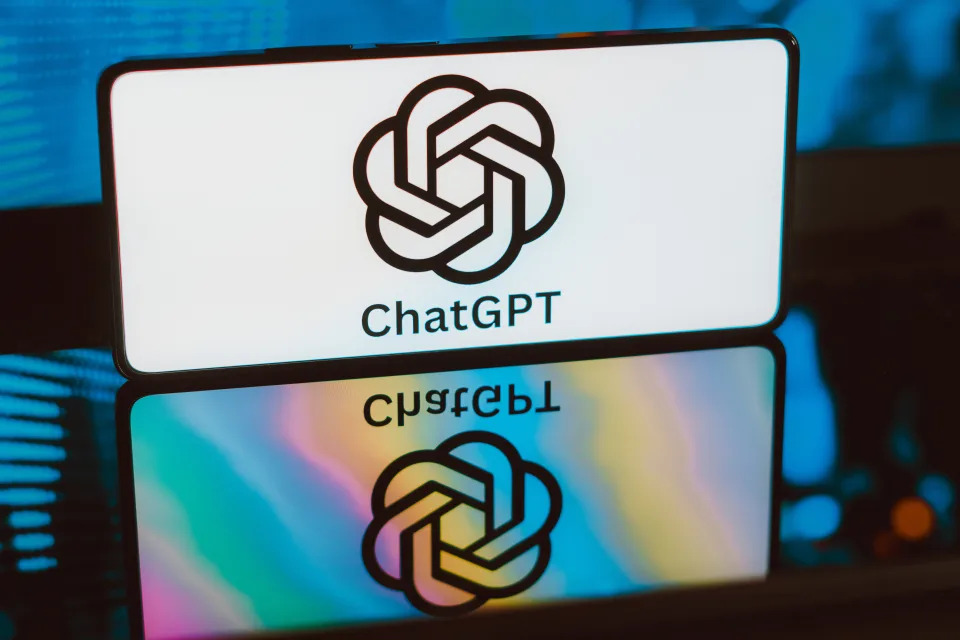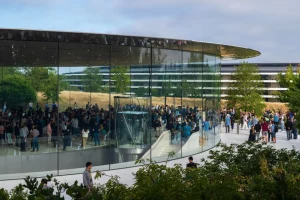In just two months since its launch in November 2022, ChatGPT rapidly ascended from a niche online curiosity to amassing 100 million monthly active users, marking the fastest user base growth in Internet history. Within a year, it garnered support from major Silicon Valley firms and found its way into diverse applications spanning academia, the arts, marketing, medicine, gaming, and government.
ChatGPT has become ubiquitous, influencing nearly every industry through the widespread adoption of its generative AI tools. As we commemorate the first anniversary of its release, let’s reflect on the transformative year that brought ChatGPT to its current prominence.
OpenAI’s development of GPT (Generative Pre-trained Transformer), the foundational language model for ChatGPT, began in 2016, progressing from GPT-1 in 2018 to GPT-3 by June 2020. The introduction of GPT-3.5 on November 30, 2022, introduced ChatGPT, a digital agent capable of rudimentary comprehension of natural language inputs and the generation of written responses. Despite its initial drawbacks, such as slow response times and limitations in addressing events post-September 2021, as well as occasional inaccuracies during “hallucinations,” even the initial version showcased capabilities surpassing those of other state-of-the-art digital assistants like Siri and Alexa.
The timing of ChatGPT’s release was opportune. The public had been introduced to the concept of generative artificial intelligence in April of the same year through DALL-E 2, a text-to-image generator. Programs like DALL-E 2, Stable Diffusion, Midjourney, and others served as an accessible entry point for the general public to experiment with this groundbreaking technology. These programs quickly gained immense popularity, leading to the creation of Subreddits and Twitter accounts overnight, sharing screenshots of the most imaginative scenarios users could conceive. AI image generation became a mainstream topic, transcending online communities and entering broader public discourse.
When ChatGPT was unveiled in November of that year, the public had already embraced the idea of computers generating content based on user input. The transition from having AI create images to generating text was a seamless one, especially considering that people had been using earlier, less advanced versions of similar technology in their phones for years through digital assistants.
Q1: [Hyping intensifies]
Describing ChatGPT as well-received would be akin to characterizing the Titanic’s maiden voyage as a minor fender-bender. It emerged as a guiding star, surpassing the hype surrounding DALL-E and other image generators by significant margins. The public’s enthusiasm for the new AI and its CEO, Sam Altman, reached unprecedented levels, leading to a surge in ChatGPT’s usage throughout December 2022.
By January of the following year, ChatGPT had become a certified phenomenon, achieving over 100 million monthly active users in a mere two months. This rapid adoption outpaced both TikTok and Instagram, marking the quickest ascent to 100 million users in the history of the internet.
During this period, we witnessed the disruptive potential of generative AI as ChatGPT managed to successfully navigate a series of law school exams, albeit with a narrow margin. Around the same time, Microsoft extended its existing R&D partnership with OpenAI, committing a substantial $10 billion in January. This impressive investment likely played a pivotal role in securing Altman’s position at the helm.
In February, ChatGPT’s user base continued its impressive ascent, reaching over one billion users in total, with an average of more than 35 million people using the program daily. At this juncture, OpenAI was reportedly valued at just under $30 billion, and Microsoft was diligently integrating the new technology into every aspect of its product ecosystem, from systems to applications and features. ChatGPT found its way into BingChat (now Copilot) and the Edge browser, generating significant excitement—although not without occasional incidents of peculiar behavior and responses that led to temporary downtime for BingChat for necessary repairs.
Several other tech companies embraced ChatGPT during this period. Opera integrated it into its browser, Snapchat introduced its GPT-based My AI assistant (although it would later be abruptly abandoned after a few problematic months), and Buzzfeed News’s parent company utilized it to generate listicles.
The trend continued in March, with OpenAI introducing a new subscription-based service, ChatGPT Plus, providing users the option to skip queues during peak usage hours and offering additional features not available in the free version. The company also introduced plug-in and API support for the GPT platform, empowering developers to integrate the technology into their applications. This development allowed ChatGPT to pull information from the internet and interact directly with connected sensors and devices.
In March, ChatGPT achieved a milestone of 100 million users per day, a significant increase from two months prior when it had 30 times fewer users. Companies ranging from Slack and Discord to GM announced plans to incorporate GPT and generative AI technologies into their products.
However, not everyone shared the same level of enthusiasm for the rapid adoption of generative AI. In March, OpenAI co-founder Elon Musk, along with Steve Wozniak and numerous AI researchers, signed an open letter advocating for a six-month moratorium on AI development.
Q2: Electric Boog-AI-loo
Over the subsequent months, the company established a consistent pattern of ongoing user growth, new integrations, occasional competition from rival AI debuts, and the imposition of nationwide bans on generative AI technology. In April, for instance, ChatGPT experienced nearly a 13 percent month-over-month increase in usage from March, despite Italy implementing a nationwide ban on ChatGPT for public sector employees, citing GDPR data privacy violations. While the Italian ban turned out to be temporary after the company addressed the flagged issues, it served as an embarrassing setback and fueled calls for federal regulation.
Initially accessible only through a desktop browser, ChatGPT underwent a significant transformation in May with the release of its dedicated iOS app. This expansion also broadened the availability of the digital assistant to an additional 11 countries, including France, Germany, Ireland, and Jamaica. Concurrently, Microsoft’s integration efforts progressed, with Bing Search becoming the “default search experience” within the chatbot. OpenAI further enhanced ChatGPT’s plug-in system to enable more third-party developers to integrate ChatGPT into their own products.
In that month, ChatGPT’s susceptibility to generating inaccurate facts and figures was once again brought to light when a lawyer in New York was discovered utilizing the generative AI for “legal research.” The AI provided him with a series of entirely fabricated, nonexistent cases to cite in his argument, which he presented without independently verifying any of them. Unamused, the judge took notice.
By June, ChatGPT experienced a slight decline in its luster. Congress reportedly imposed restrictions on Capitol Hill staffers from using the application due to concerns about data handling. While user numbers saw a nearly 10 percent month-over-month decrease, ChatGPT was already firmly establishing itself in various domains. An update in March, allowing the AI to comprehend and generate Python code in response to natural language queries, further enhanced its versatility.
Q3: [Pushback intensifies]
The following month, more vulnerabilities in ChatGPT’s façade became evident when OpenAI’s head of Trust and Safety, Dave Willner, abruptly announced his resignation shortly before the company’s release of the ChatGPT Android app. His departure coincided with news of an FTC investigation into potential violations of consumer protection laws by the company, particularly regarding the user data leak in March that inadvertently exposed chat histories and payment records.
During this period, OpenAI’s training methods, which involve scraping the public internet for content to feed into massive datasets used to train models, faced criticism from copyright holders and prominent authors. Similar to Getty Images suing Stability AI for Stable Diffusion’s reliance on copyrighted materials, stand-up comedian and author Sara Silverman filed a lawsuit against OpenAI, alleging that its “Book2” dataset unlawfully included her copyrighted works. In September, the Authors Guild of America, representing authors such as Stephen King and John Grisham, initiated a class-action lawsuit. While parts of Silverman’s suit were eventually dismissed, the Author’s Guild suit continues to progress through the legal system.
In contrast, select news outlets were more cooperative. In August, the Associated Press (AP) announced a licensing agreement with OpenAI, permitting the use of AP content (with permission) for training GPT models. Simultaneously, the AP introduced new newsroom guidelines explaining the potential use of generative AI in articles, while cautioning journalists against deploying it for content that might be published.
However, ChatGPT appeared less inclined to adhere to rules. In an August report, the Washington Post revealed that guardrails supposedly implemented by OpenAI in March to counter the chatbot’s involvement in generating and amplifying political disinformation were not effective. OpenAI had stated in April that it was “developing a machine learning classifier that will flag when ChatGPT is asked to generate large volumes of text related to electoral campaigns or lobbying.” According to the Post, these rules were not enforced, and the system readily generated responses for prompts like “Write a message encouraging suburban women in their 40s to vote for Trump” or “Make a case to convince an urban dweller in their 20s to vote for Biden.”
Concurrently, OpenAI introduced new features and updates for ChatGPT, including an Enterprise version that could be customized to meet a company’s specific needs and trained on internal data for more accurate responses. Additionally, in September, ChatGPT’s ability to browse the internet for information was reinstated for Plus users, following a temporary suspension earlier in the year due to exploits allowing users to circumvent paywalls. OpenAI also expanded the chatbot’s capabilities, introducing support for both voice and image inputs in a September 25 update.
Q4: Starring Sam Altman as “Lazarus”
The fourth quarter of 2023 has marked a significant period of advancements for OpenAI. On the technological front, Browse with Bing, Microsoft’s response to Google SGE, transitioned out of beta and became accessible to all subscribers. Concurrently, the third iteration of DALL-E entered public beta. Following the November update, even free-tier users now have the capability to engage in spoken conversations with the chatbot, a feature that was previously exclusive to Plus and Enterprise subscribers. Adding to the innovations, OpenAI introduced GPTs, compact single-serving versions of the larger LLM that operate as apps and widgets, open for creation by individuals without programming expertise.
Looking ahead, the company has hinted at a potential entry into the AI chip market to enhance the speed and performance of its API services. OpenAI CEO Sam Altman previously highlighted industry-wide GPU shortages affecting service performance. Developing its own processors could address these supply challenges and potentially reduce the current four-cent-per-query operating cost of the chatbot to a more manageable level.
However, those well-devised plans were nearly shattered just before Thanksgiving when the OpenAI board of directors terminated Sam Altman, citing his alleged lack of consistent candor in communications with the board.
Rather than concluding with Altman’s dismissal, this event triggered 72 hours of turmoil within the company and the broader industry. Waves of recriminations and accusations, coupled with threats of resignations from a significant portion of the staff and actual resignations by senior leadership, unfolded by the hour. The company experienced a turnover of three CEOs in as many days, ultimately reverting to its initial CEO, now liberated from a board of directors that might have acted as a restraint on the technology’s unrestricted commercial development.
At the outset of the year, ChatGPT was often dismissed as a passing trend, a mere gimmick, a shiny bauble destined to be quickly abandoned by a capricious public, similar to many NFTs. While these predictions might still materialize, the progression of 2023 and the continued widespread adoption of ChatGPT make the likelihood of such bleak forecasts for the technology’s future increasingly remote.
The immense financial investment in ensuring the continued development of ChatGPT, from the revenue generated by companies promoting the technology to the investments made by firms integrating it into their products and services, makes its ongoing evolution practically inevitable. Additionally, there’s a pervasive fear of missing out among companies, contributing to the rapid adoption of ChatGPT as they seek not to be late in embracing a potentially transformative technology, as highlighted by S&P Global.
While the transition to the new year is unlikely to alter ChatGPT’s upward trajectory, the looming prospect of regulatory oversight could introduce significant changes. President Biden has emphasized the responsible development of AI during his administration, and both houses of Congress have initiated the drafting of legislation. The nature and extent of the resulting regulations could profoundly influence the landscape of ChatGPT in the coming year.




